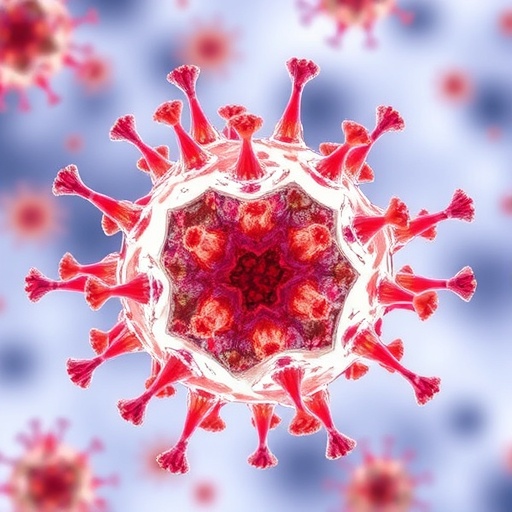TORONTO, Sept. 9, 2025 – A groundbreaking longitudinal investigation conducted by researchers at York University’s Department of Psychology has unveiled critical insights into the complex interplay between internalizing psychological symptoms and the simultaneous use of alcohol and cannabis among young adults. This pioneering study, published today in the esteemed journal Alcohol: Clinical and Experimental Research, meticulously tracked the daily substance use patterns and emotional states of 151 young adults aged 19 to 25 over an eighteen-month period, revealing how periods marked by elevated stress, anxiety, and depressed mood significantly influence the co-consumption of these substances and the subsequent life consequences experienced by users.
The research, led by Associate Professor Jeffrey Wardell, director of York University’s Behavioural Alcohol and Cannabis Research Lab (BAC Lab), addresses an urgent public health concern emerging in the post-legalization era of cannabis in Canada. With cannabis use on the rise among young adults, understanding why these individuals often concurrently consume alcohol and cannabis—and how such behavior correlates with mental health—is increasingly essential for developing effective intervention strategies. Wardell emphasizes that while occasional combined use may seem innocuous, the data substantiate heightened risks associated with such patterns, especially among those grappling with adverse emotional states.
Underlying the study is a sophisticated longitudinal design employing intensive daily self-reports collected via mobile surveys administered in three 21-day bursts spaced six months apart. Participants documented their alcohol and cannabis intake and detailed any negative repercussions encountered. Complementing this, they reported on psychological symptomatology related to depression, anxiety, and stress alongside their motivations for combining substances. This multi-temporal approach enables a nuanced examination of the bidirectional relationships between internal states and co-use behaviors, a methodological advancement over cross-sectional analyses traditionally employed in substance use research.
Results compellingly demonstrate that young adults experiencing heightened internalizing symptoms are more prone to using alcohol and cannabis simultaneously, often with the explicit motive of intensifying psychoactive effects—“doubling up” to achieve a heightened state of intoxication. Wardell elaborates that this cyclical pattern appears driven primarily by attempts at emotional self-regulation, with participants indicating that combining substances momentarily alleviated negative feelings. However, this short-term relief paradoxically escalated the frequency of binge drinking episodes paired with cannabis use, leading to cascading adverse outcomes spanning physical health, psychological well-being, and socio-environmental domains.
Delving deeper into the neurodevelopmental context, the study situates these behavioral patterns within the prolonged maturation trajectory of the young adult brain, which continues refining executive functions and emotional regulation well into the mid-20s. Given that dependencies on substances such as alcohol and cannabis are disproportionately observed within this age group, the findings hold particular salience. Wardell notes that exposure to combined substances during this sensitive developmental window likely compounds the risk of maladaptive neural plasticity, exacerbating susceptibility to enduring substance use disorders and mental health challenges.
Beyond mechanistic insights, the study importantly underscores the long-term ramifications of the simultaneous use of alcohol and cannabis. While participants acknowledged the temporary mitigation of distress through substance use, Wardell cautions that these behaviors are linked to elevated incidences of negative life events, including academic, occupational, and interpersonal difficulties. Such outcomes reinforce the pressing need for early detection and intervention frameworks designed to address co-use behaviors, particularly when motivated by maladaptive coping strategies.
Highlighting the translational potential of these findings, Wardell advocates for a multi-pronged approach to prevention and treatment, centered on fostering healthier alternative coping mechanisms. Techniques such as mindfulness meditation, controlled breathing exercises, and physical activity can serve as effective adjuncts or substitutes for substance use in regulating distress. Peer support networks and professional counseling services further constitute vital resources. The study also draws attention to accessible online screening tools that can empower young adults to self-assess substance-related risks, especially those linked to reliance on psychoactive agents for emotional relief.
The study’s methodological rigor stems from its longitudinal survey approach, which enables the capture of temporal fluctuations in both affective symptoms and substance use motives. This design circumvents recall biases commonly encountered in retrospective surveys and illuminates dynamic within-person processes that inform intervention timing and targeting. The granular data reveal that the propensity to simultaneously consume alcohol and cannabis escalates notably during periods characterized by acute depressive or anxious states, emphasizing the episodic nature of risk.
In considering the broader epidemiological implications, Wardell situates the findings within the evolving landscape of cannabis legalization and shifting societal norms around substance use. The normalization of cannabis has potentiated its integration into casual and heavy alcohol consumption routines, raising complex questions about polysubstance interactions and public health messaging. The study’s emphasis on young adults is especially prescient, given that this cohort not only exhibits the highest rates of co-use but also stands at a critical juncture where preventive efforts can substantially alter life course trajectories.
A key contribution of the study lies in elucidating specific motivational pathways that connect internalizing symptoms to simultaneous substance use. Contrary to simplistic models which treat co-use as merely additive effects of alcohol and cannabis consumption, Wardell’s team delineates how psychological distress uniquely modulates usage patterns through motives framed around alleviating negative affect and enhancing intoxication. This distinction has profound implications for tailoring clinical assessments and interventions that attend to motivational underpinnings rather than solely behavioral manifestations.
Moreover, the research reveals an urgent necessity for integrating mental health assessments into substance use interventions for young adults. Traditional siloed approaches may overlook the intricacies of co-occurring internalizing disorders and polysubstance behaviors, thereby limiting their efficacy. By contrast, informed therapeutic paradigms that concurrently address mood disturbances and substance co-use could disrupt trajectories toward entrenched addiction and chronic psychological impairment.
Wardell’s findings also illuminate emerging challenges and opportunities within digital health, as the study leverages mobile technology to enable real-time data capture. This method not only enhances ecological validity but also opens avenues for just-in-time adaptive interventions (JITAI) that respond dynamically to fluctuations in psychological distress and substance use cues. Such innovations could revolutionize both research methodologies and clinical practices targeting young adult populations.
Ultimately, this landmark study from York University contributes compelling evidence that the psychological landscape of young adults profoundly shapes their substance use behaviors, especially in the context of simultaneous alcohol and cannabis consumption. As policymakers, clinicians, and educators grapple with the public health implications of shifting substance use paradigms, research such as this furnishes a critical foundation for nuanced, evidence-based responses—aimed at mitigating harms while respecting the developmental and psychosocial realities of emerging adulthood.
Subject of Research: People
Article Title: Internalizing symptoms are indirectly associated with simultaneous alcohol and cannabis use through specific motives for simultaneous use: A longitudinal study of young adults
News Publication Date: 9-Sep-2025
Web References:
https://onlinelibrary.wiley.com/doi/10.1111/acer.70147
References:
Wardell, J. et al., 2025. Internalizing symptoms are indirectly associated with simultaneous alcohol and cannabis use through specific motives for simultaneous use: A longitudinal study of young adults. Alcohol Clinical and Experimental Research. DOI: 10.1111/acer.70147
Keywords:
Cannabis, Alcohol abuse, Mental health
Tags: alcohol and cannabis co-consumption riskscombined alcohol and cannabis useeffects of cannabis legalizationemotional states and substance useintervention strategies for substance uselongitudinal study on young adultsmental health and substance usepsychological symptoms and substance usepublic health concerns cannabisrisks of concurrent substance useYork University psychology researchyoung adult substance use patterns





